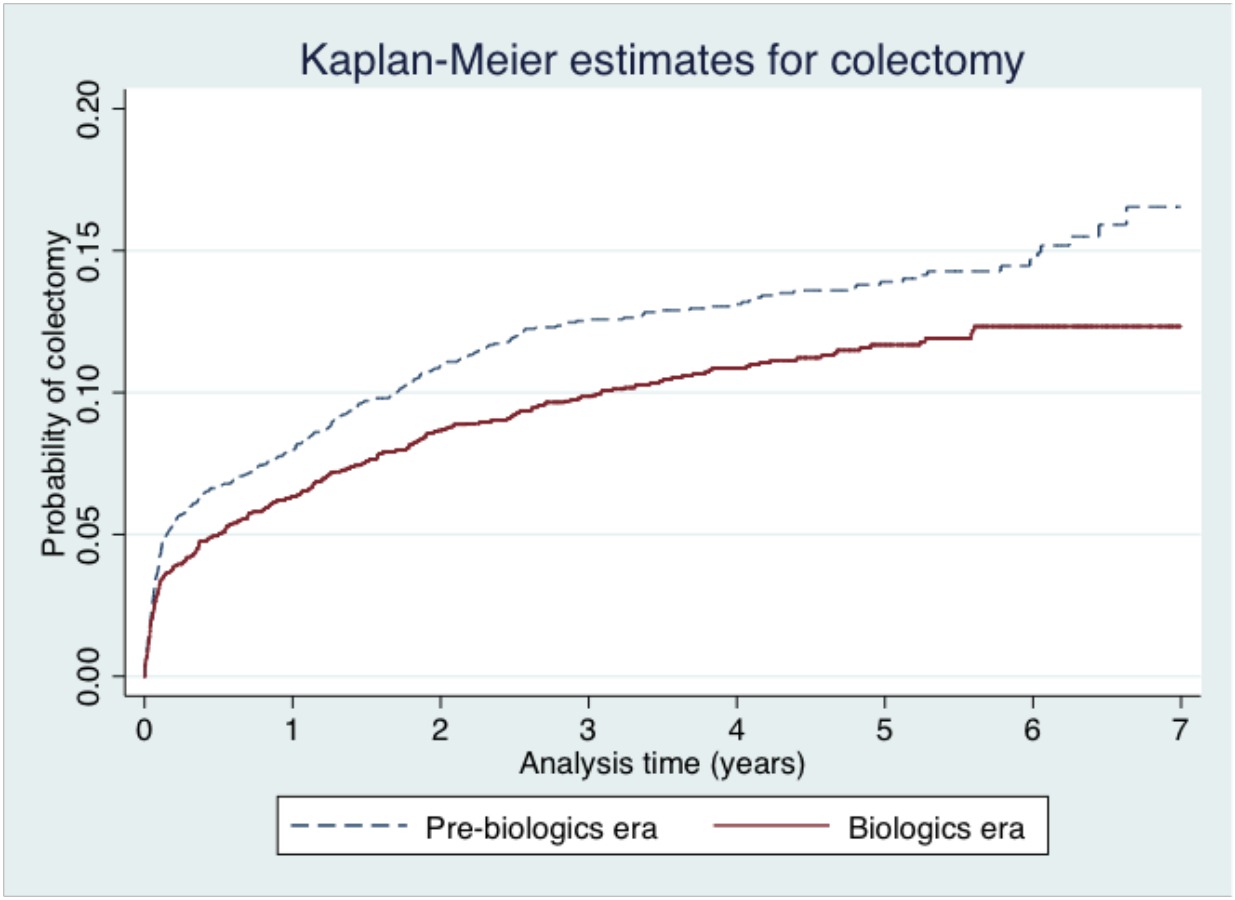
|
 |
Back to 2017 Program and Abstracts
INCIDENCE RATES AND PREDICTORS OF COLECTOMY FOR ULCERATIVE COLITIS IN THE ERA OF BIOLOGICS:RESULTS FROM THE PROVINCIAL DATABASE IN QUEBEC
Maria Abou Khalil*1, Marylise Boutros1, hacene nedjar2, Philip H. Gordon1, Gabriela Ghitulescu1, Carol-Ann Vasilevsky1, Nancy Morin1, Elham Rahme2
1Division of Colorectal Surgery, Jewish General Hospital, McGill University, Montreal, QC, Canada; 2Epidemiology, McGill University, Monteal, QC, Canada
Background: Biologics are at the forefront of agents that revolutionized care of patients with ulcerative colitis (UC). However, there has been debate on their ability to reduce long-term risk of colectomy. Moreover, because of their immunosuppressive effects, there remain concerns regarding their impact on postoperative outcomes when administered peri-operatively. Thus, our primary objective was to evaluate the long-term incidence of colectomy in the pre-biologics and biologics eras in patients with UC in Québec, Canada and to identify risk factors for colectomy. A secondary objective was to assess postoperative risk of mortality in both eras.
Methods: Using the Québec provincial health insurance agency (Régie de l’assurance maladie du Québec) two cohorts were defined: pre-biologics era (1998-2004) and biologics era (2005-2011). Patients with a diagnosis of inflammatory bowel disease or colectomy the year prior to first diagnosis of UC in the study period were excluded. Postoperative death was defined as death up to 90-days post-colectomy. Multivariate logistic regression model was fit to compare patient baseline characteristics between the two cohorts. Kaplan-Meier curves were constructed to display unadjusted time to event in the two study periods and survival analyses were performed using Cox proportional hazards models.
Results: 335/2,829 patients in the pre-biologics era underwent colectomy, compared to 314/3,313 patients in the biologics era. Median time of follow-up (first and third quartiles) was similar in both periods: 3.38 (1.56, 5.21) years in the pre-biologics era, and 3.29 (1.68, 5.14) years in the biologics era (p=0.206). Incidence rates of colectomy were 36.08/1000 and 29.99/1000 patient years in the pre-biologics and biologics eras, respectively. Unadjusted rate of colectomy was higher in the pre-biologics vs. biologics era (log-rank p=0.004) and this decrease remained significant after adjusting for potential confounders (hazard ratio, HR; 95%CI= 0.81; 0.70-0.95) (Figure 1). Predictors of colectomy included anemia (1.66; 1.38-2.01), history of gastrointestinal (GI) hospitalizations (1.24; 1.04-1.47), congestive heart failure (CHF) (2.08; 1.27-3.40) and male gender (1.47; 1.26-1.72). Post-operative mortality was 8.06% and 3.18% in the pre-biologics and biologics eras, respectively (log rank p=0.007). After adjusting for potential confounders, age at index date (1.08; 1.05-1.12) and emergency surgery (5.65; 2.19-14.54) remained associated with an increased hazard of death.
Conclusion: We observed decreased incidence rates of colectomy after introduction of biologics in Québec. Risk factors for colectomy included GI hospitalizations, anemia, male gender and CHF. Emergency surgery and age were predictors of postoperative mortality and the biologics era was not a predictor of postoperative mortality.

Back to 2017 Program and Abstracts
|


